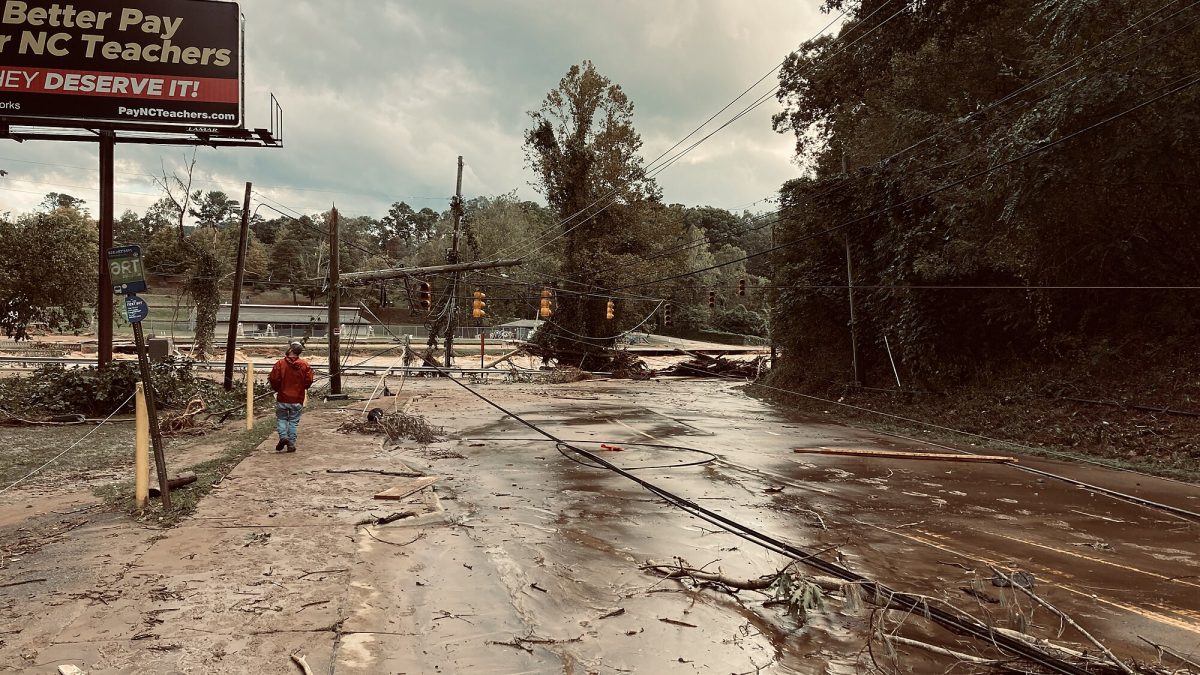After making landfall in Florida as a category 4 hurricane on Sept. 26, Helene traveled over 500 miles along the east coast and devastated states from Florida to southern Virginia. This record-breaking storm surge, totalling over eight feet in locations like Florida, has resulted in extreme flooding, winds, power outages, injuries, death, and evacuations.
Helene’s devastating path began on Florida’s gulf coast near the city of Perry. Waters from the storm rose an abnormal amount, reaching up to 15 feet. Sea water consumed cars and trees while powerful winds flattened houses and covered the region in debris. Hurricane Helene is now named the deadliest hurricane since Hurricane Katrina in 2005.
“When there’s feet of mud filling up properties and homes and an entire town is washed into a lake.” the founder and CEO of the Cajun Navy Robert Gaudet said to CNN. “It’s not just what you see, but it’s where you can drive for hours and hours and see the destruction and damage, you lose a sense of how life has been and how it is for you really quickly.”
At least 227 people have died from the storm since the publishing of this article and many residents are still missing as first responders and federal personnel work hard in search and rescue.
“President Biden…has directed the Department of Defense to deploy up to 1,000 active-duty soldiers to support the delivery of food, water, and other critical commodities.” The White House said in a statement on Oct. 7. “The Department of Defense has activated 22 helicopters to aid in search and rescue operations and provided dozens of high-water vehicles.”
Helene continued its track towards Georgia, Tennessee, the Carolinas, and even southern Virginia. Despite weakening into a Category 2 hurricane, and eventually into being classified as a tropical storm, by the time it reached North Carolina, Helene’s effects continued to be destructive.
“The storm’s impacts were especially long-lasting because of its massive size. North Carolina State Climate Office said to CBS. “It developed in a high-humidity environment over the warm Gulf of Mexico, which let it grow and strengthen unimpeded. It was one of the most incredible and impactful weather events our state has ever seen.”
Highways and roads have crumbled and the supply of drinking water has cut off in Asheville, North Carolina. The hurricane has caused 11 counties in North Carolina to evacuate.
“We lost all power and the internet, and no one could call home or text their parents,” former Stone Bridge and current Lenoir Rhyne University student Keith Galway said. “Classes got canceled and trees were falling; one even crushed a girl’s car.”
Locally, the Black Student Union at Stone Bridge has started a Hurricane Relief Drive to help all that are affected by the storm. Donations for necessities such as water, sanitizer wipes, toilet paper, flashlights and more can be brought to the Bungalow Lakehouse in Sterling from now until October 5th.
“All donations will be sent to the communities in North Carolina affected by this disaster,” BSU member Kaeleigh Carroll said. “It’s really important to help in any way possible even if we can’t be there directly.”
Unfortunately, the worst of hurricane season may not be over. Florida is under a hurricane watch again, but this time with Hurricane Milton, a category 5 hurricane that is predicted to land on Oct. 9. Florida has issued widespread evacuation orders for many communities, including parts of Lee, Hillsborough, and Sarasota counties.
For more information on the developing storm, check national weather listings.




